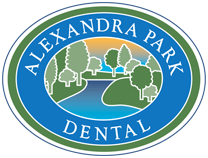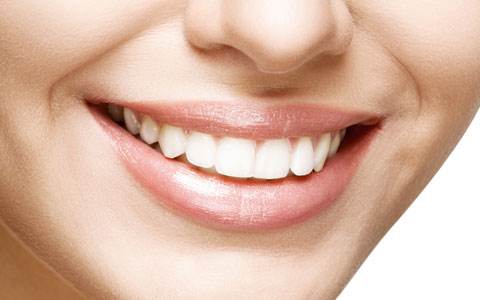Dental Terms
Dental Crowns Leduc
A dental crown is a restorative dental treatment that involves the use of materials fabricated by indirect methods to cap or completely cover a tooth. At Alexandra Park Dental, we offer high-quality dental crown services to help you restore the function and appearance of your teeth. Our experienced dentist, Dr. Richard W. Lee, ensures that your crown treatment is crafted and tailored to your specific needs.
Advantages of Indirect Crown Fabrication
Indirect crown fabrication offers several advantages, including:
- Fabrication of the restoration without the need for the patient to be in the dental chair during the process.
- Utilization of materials that require special fabrication methods, such as casting.
- The use of materials that require intense heat for processing, such as gold and porcelain.
The restorative materials used in indirect restorations possess superior mechanical properties compared to materials used in direct restorations, resulting in a higher-quality restoration.
Utilizing Technology in Crown Fabrication
Advancements in technology and material chemistry have revolutionized crown and bridge fabrication. Computer-aided design and computer-aided manufacturing (CAD/CAM) technology have become integral in creating precise and durable crowns.
Why Restore with a Crown?
When a tooth is affected by decay, the initial approach is to provide an intracoronal restoration, which consists of dental materials placed entirely within the tooth's structure. These restorations are commonly referred to as "fillings" and can be made from materials like silver-colored amalgam, tooth-colored resin, or gold. Inlays are also considered intracoronal restorations.
However, in cases where a tooth has lost significant structure due to decay or fractures, it may require an extracoronal restoration, such as a dental crown. Extracoronal restorations are designed to cover and protect the tooth to a varying degree and can be made from materials like gold, ceramic, or a combination of both.
The choice between intracoronal and extracoronal restorations depends on factors such as the extent of tooth damage, aesthetics, tooth location, and the functional forces the tooth will endure once restored. Crowns offer advantages over large intracoronal restorations, providing better protection against future fractures and recurrent decay.
Other Reasons to Restore with a Crown
Implants
Dental implants are used as an alternative to replace missing teeth. Once integrated into the jawbone, implants can be fitted with various prostheses, including crowns or bridges. These restorations improve both aesthetics and function.
Endodontically Treated Teeth
Endodontic treatment, or root canal therapy, is often necessary when the pulp of a tooth becomes infected or damaged. Endodontically treated teeth lose vitality and become more brittle. To protect them from fracture, posterior teeth, especially molars, should be crowned after root canal therapy. Anterior teeth, which endure less force during function, may be treated with intracoronal restorations after root canal therapy if sufficient tooth structure remains.
Fractures of endodontically treated teeth, especially in posterior regions, can occur when cuspal protection is not provided by a crown.
Surveyed Crown
A surveyed crown is used when a tooth needs to serve as an abutment for a removable partial denture but lacks the necessary features for such a task. Surveyed crowns can be customized to include specific characteristics required for denture attachment.
Aesthetics
Crowns can be used to improve the aesthetics of a patient's smile. When other options like veneers or laminates are not suitable due to occlusion, decay, or tooth grinding habits, full coverage crowns can enhance the size, shape, and shade of teeth while providing durability.
Tooth Preparation
Preparing a tooth for a crown involves the irreversible removal of a significant amount of tooth structure. The extent of tooth reduction depends on the material used for the crown. For example, full gold crowns require minimal tooth reduction (0.5 mm), while porcelain-fused-to-metal crowns need more reduction (at least 1.5 mm to accommodate porcelain).
If there is insufficient tooth structure for proper crown retention, a build-up material may be necessary. In severe cases, a post and core may be required. For teeth with limited remaining structure and crown lengthening may be needed, extraction and implant placement may be considered.
Taper
Proper taper is essential when preparing a tooth for a crown. A taper of 6 degrees around the entire circumference of the prepared tooth is usually appropriate. This taper allows for a secure fit of the crown while providing sufficient retention.
Margin
The margin of a crown is the most coronal position of untouched tooth structure. It should be well-defined and ideally placed below the gum line for aesthetic purposes. However, care must be taken not to violate the biologic width, which can lead to complications.
Adequate and Appropriate Restoration of Tooth Structure
Crowns, whether made entirely of metal or with added porcelain, provide strength and durability to damaged teeth. Properly designed and fabricated crowns can reproduce the original dimensions of the tooth, including cusp heights and slopes, resulting in a restoration that closely mimics natural tooth structure.
3/4 and 7/8 Crowns
In some cases, a 3/4 or 7/8 crown may be used to preserve healthy natural tooth structure while providing the necessary coverage and support for a tooth. These restorations are typically utilized for teeth that are less visible when smiling.
All-Ceramic Restorations
All-ceramic restorations are aesthetically pleasing and can be fabricated using CAD/CAM technology. These restorations are designed to match the color and appearance of natural teeth. However, they may not offer the same strength and durability as metal-based crowns.
Longevity
The lifespan of a dental crown varies depending on several factors. On average, a crown can last around 10 years, but with proper care, it can endure much longer. Good oral hygiene practices, regular dental check-ups, and avoiding harmful habits can extend the lifespan of your crown.
Types and Materials
There are various methods and materials used in crown fabrication:
Full Gold Crown
Full gold crowns consist entirely of a single piece of alloy, often containing gold, platinum, palladium, silver, copper, and tin. High noble content is essential for quality. These crowns are known for their durability and longevity.
Porcelain-Fused-to-Metal Crowns
Porcelain-fused-to-metal (PFM) crowns combine the strength of a metal substructure with the aesthetics of porcelain. The metal substructure provides durability, while the porcelain outer layer mimics the appearance of natural teeth.
All-Porcelain or All-Ceramic Crowns
All-porcelain or all-ceramic crowns are known for their excellent aesthetics and natural tooth-like appearance. They are a popular choice for front teeth. However, they may not be as strong as metal-based crowns and may be more prone to chipping or fracture.
Zirconia Crowns
Zirconia crowns are known for their strength and durability. They are often used for posterior teeth where biting forces are greater. Zirconia crowns can be fabricated using CAD/CAM technology for precise fit and aesthetics.
Temporary Crowns
Temporary crowns are often used to protect a prepared tooth while a permanent crown is being fabricated. They are usually made from acrylic or stainless steel and are not intended for long-term use.
Choosing the Right Material
The choice of crown material depends on various factors, including the tooth's location, functional requirements, aesthetics, and the patient's preferences. During your consultation, Dr. Richard W. Lee will discuss your options and recommend the most suitable crown material for your specific case.
The Crown Placement Procedure
The crown placement procedure typically involves the following steps:
1. Consultation and Examination
Your treatment journey begins with a thorough examination of your teeth and a discussion of your treatment options. Dr. Richard W. Lee will assess the condition of your tooth and recommend crown placement if it's the best solution for your oral health.
2. Tooth Preparation
If you decide to proceed with a crown, the tooth that will receive the crown is prepared. This involves removing a portion of the tooth's outer structure to make room for the crown. The amount of tooth reduction will depend on the type of crown and material chosen.
3. Impressions
After tooth preparation, impressions of your teeth are taken. These impressions are used to create a mold that will be used to fabricate your custom crown. In many cases, digital impressions are taken for greater precision and comfort.
4. Temporary Crown
While your permanent crown is being fabricated, a temporary crown is placed over the prepared tooth to protect it and maintain proper tooth alignment. This temporary crown is usually made of acrylic and is meant to be worn for a short duration.
5. Crown Fabrication
Your impressions are sent to a dental laboratory where skilled technicians craft your custom crown. The choice of material, such as gold, porcelain-fused-to-metal, all-porcelain, or zirconia, will be based on your specific needs and preferences.
6. Crown Fitting
Once your custom crown is ready, you'll return to our Leduc dental practice for the fitting. Dr. Richard W. Lee will ensure that the crown fits properly, matches your natural bite, and feels comfortable.
7. Final Placement
Once you and Dr. Richard W. Lee are satisfied with the fit and appearance of the crown, it will be permanently cemented in place. Your temporary crown will be removed, and the permanent crown will be bonded to your prepared tooth using dental cement.
8. Bite Adjustment
After crown placement, Dr. Richard W. Lee will make any necessary adjustments to your bite to ensure proper occlusion (the way your upper and lower teeth fit together). This step is crucial to prevent any discomfort or issues with your new crown.
9. Final Polishing
Your crown will be polished to ensure a smooth and natural appearance. The final result should blend seamlessly with your surrounding teeth.
10. Aftercare Instructions
Before you leave our Leduc dental practice, Dr. Richard W. Lee will provide you with instructions on how to care for your new crown. It's essential to maintain good oral hygiene and attend regular check-ups to ensure the longevity of your crown.
Cost of Dental Crowns
The cost of dental crowns can vary widely depending on several factors, including the type of crown, the materials used, the location of the tooth, and the complexity of the case. During your consultation, Dr. Richard W. Lee will provide you with a detailed cost estimate based on your specific treatment plan.
Insurance Coverage
Many dental insurance plans partially cover the cost of dental crowns when they are considered a necessary restorative procedure. Our Leduc dental practice accepts most dental insurance plans, and we can help you understand your coverage and maximize your benefits.
Schedule Your Consultation
If you believe you may benefit from a dental crown or have questions about the procedure, we invite you to schedule a consultation with Dr. Richard W. Lee at Alexandra Park Dental. Our experienced dental team is dedicated to providing high-quality restorative dentistry services in Leduc.
Contact us today to book your appointment and take the first step toward restoring your smile and oral health.

